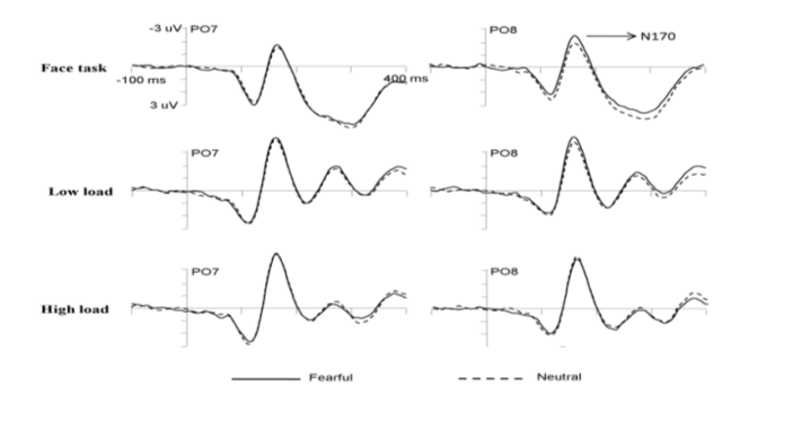2019 年 3 月 29-4 月 1 日 南昌
一、会议简介 由江西师范大学、广东省认知科学学会主办的“第六届脑成像与脑电研究与应用学术大会”将于 2019 年 3 月 29 日-4 月 1 日在江西南昌举行。 认知神经科学发展非常迅猛,fMRI, PET, EEG/ERP, fNIRS, MEG 等都是目前认知神经科学领域的重要 研究技术。会议宗旨是交流认知神经科学研究,推广脑成像技术在高校、医院等方面的应用。 前五届研讨会于 2013 年以来分别在黄山、重庆、大连、开封和上海举办,得到了全国心理学和医学界同行的大力支持,参会代表逐年增多,已经成为我国认知神经科学领域富有影响力的年度学术会议。本次研讨会特别邀请海内外心理学和医学中 ERP、fMRI、fNIRS 研究领域的知名专家和青年学者,系统讲解脑成像理论和技术在心理学和医学中的应用以及国际前沿研究动态,展现当前主要研究方法和进展,为不同单位的学者学生提供合作交流的渠道。 欢迎来自国内外相关领域的、凡是使用或打算使用 ERP、fMRI 和 fNIRS 等脑成像作为技术手段开展科 研和临床应用的科研人员、教师、医生和学生参加会议。
二、会议组织机构主办单位:江西师范大学、广东省认知科学学会 协办单位:深圳大学脑疾病与认知科学研究中心、中国心理学会脑电相关技术专委会 赞助单位:瀚翔生物医疗电子股份有限公司、上海心仪电子科技有限公司。 欢迎继续加盟,虚位以待! 会议主席:罗跃嘉教授、胡竹菁教授、李红教授 会议组织委员会:李富洪(主任)、关青(副主任)、王宝玺、程家萍、黄福荣、卓冰鑫、唐捷
三、大会邀请报告(按报告人姓氏拼音排序,个别调整请以会议手册为准)
韩世辉:北京大学心理与认知科学学院教授,杰青、长江学者
李葆明:南昌大学副校长,杰青、长江学者
李小俚:北师大认知神经科学与学习国家重点实验室副主任、杰青
罗劲:首都师大学习与认知北京市重点实验室主任、中国心理学会秘书长
KeithKendrick:电子科大生命科学与技术学院特聘教授,千人
秦绍正(北师大):北师大认知神经科学与学习国家重点实验室教授、青千、优青
时杰(北大六院):北京大学中国药物依赖性研究所常务副所长,杰青
谭力海(深圳大学):深圳大学特聘教授、深圳市神经科学研究院院长、千人
汪凯:安徽医大科技处处长,第一附属医院神经内科主任,百千万人才
另有专题报告30 余场,详见第二轮通知,敬请期待。
四、会议日程安排
日期时间会议内容说明
四、会议日程安排
| 日期 | 时间 | 会议内容 | 说明 |
| 3月29日 | 全天 | 报到 | |
| 3月30日 | 上午 | 大会报告 | 每位半小时,拟安排4-5人 |
| 下午 | 专题报告 | 分会场进行,每位20分钟 | |
| 3月31日 | 上午 | 大会报告 | 每位半小时,拟安排4-5人 |
| 下午 | 专题报告 | 分会场进行,每位20分钟 | |
| 4月1日 | 全天 | 会议交流、参观、考察 | |
五、重要日期:
2019 年 3 月 25 日:摘要截止,提前注册截止(请尽量提前缴费以便开具会议费发票)
2019 年 3 月 29 日:会议报到
2019 年 3 月 30-31 日:正式会议
六、会议注册
通过填写会议回执(附件一)并 email 到brainsci@szu.edu.cn
1. 注册费,包括会议资料、会议工作餐等费用。 完成注册。
| 类别 | 注册费 | |
| 汇款(4月7日之前) | 现场缴费 | |
| 教师、研究人员 | 1600元 | 1800元 |
| 学生 | 900元 | 1000元 |
2.汇款账户信息【请务必在汇款附言处注明:姓名、单位和会议费】
收款单位:广东省认知科学学会
银行账号:7441710183100000280
开户银行:中信银行深圳南山支行
六、会议住宿及交通:第二轮通知中告知。
七、会议联系方式
联系人(会务、住宿、交通) 程家萍(报名注册、投稿、交费)
王宝玺:15179198526 电话:(0755)86670304
卓冰鑫:18379155219 E -mail:brainsci@szu.edu.cn
附件一:第六届全国脑成像与脑电研究与应用学术大会报名回执
| 姓名* | 性别 | 身份* | 教研()
学生() |
职称 | ||||||||||
| 提交摘要* | 是□ 题目:
否□ |
|||||||||||||
| 单位名称* | ||||||||||||||
| 通讯地址 | 邮编 | |||||||||||||
| 手机号* | Email* | |||||||||||||
| 缴费信息*
(如现场缴费请在备注中注明) |
汇款人 | 汇款金额 | 汇款日期 | |||||||||||
| 发票抬头及税号 | 备注 | |||||||||||||
| 住宿信息* | ||||||||||||||
注:1.带*项必填,学生包括本科生、研究生;
2.本表可复印、复制。
附件二:摘要模板(中英文均接受) The impact of perceptual load on unconscious emotional processing Lili Wang, Chunliang Feng, Yuejia Luo* Institute of Affective and Social Neuroscience, College of Psychology and Sociology, Shenzhen University, Shenzhen China, 816050 (luoyj@szu.edu.cn) Objective Emotion stimuli can be processed without conscious awareness. Recent studies have shown that the processing of invisible stimuli can be modulated by perceptual load. However, it is unclear whether the processing of unaware fear can beinfluenced by perceptual load. Because fearful stimuli are important to human survival, the unconscious processing of fearful stimuli may be independent of perceptual load. Here, we used event-related potentials (ERPs) to assess whether perceptual load has an influence upon unconscious emotional processing. Methods 16right-handed students were recruited as paid volunteers from a university. Faces were black and white photographs taken from native Chinese Facial Affective Picture System. Target face stimuli consisted of 20 fearful faces and 20 neutral faces. The perceptual load was manipulated for a letter search task presented at fixation, and facial expressions (fearful or neutral) were presented peripherally (16.7 ms) and masked such that conscious awareness was prevented. The letter string comprised one target letter (N or X) and five non-target letters (H, K, M, W, or Z) arranged in random order. Low load letter strings were made of 6 Xs or 6 Ns, whereas high load strings consisted of one of the target letters and the five non-target letters in random order (e.g. ‘NHKWZM’). Participants were instructed to discriminate the target letters at fixation or the facial expression in the periphery. Results & Discussion Participants were faster and committed fewer errors in the low load condition than in high load condition. Peak amplitude of N170 was measured at occipital-temporal sites (PO7 and PO8) as the maximal negative peak in the time window 150-190 ms. Fearful faces elicited larger N170 amplitudes than neutral faces over the right hemisphere in both face task and low load condition, but the N170 effect was eliminated under high load condition, suggesting that the processing of unconscious fear depends on perceptual load. Conclusions The N170 effect was eliminated under high load condition, suggesting that attention resources are needed for the processing of non-conscious emotional stimuli. Our study provides initial evidence that perceptual load may affect the mechanisms underlying unconscious fearful processing. Acknowledgement: This work was supported by the NSFC (30930031).
Figure 1.Grand average ERP waveforms elicited by masked fearful faces and masked neutral faces in the face task and in the letter task with low or high perceptual load at lateral parieto-occipital electrodes.


